To calculate your home energy upgrades' return on investment, start by conducting an energy audit to identify inefficiencies. Estimate the costs of potential upgrades, including materials and labor. Research expected energy savings for each improvement using online calculators or past utility bills. Determine the payback period by dividing the total upgrade cost by annual energy savings. Factor in potential rebates, tax incentives, and long-term benefits like increased property value. Remember that some upgrades offer immediate savings, while others may take longer to break even. By evaluating these factors, you'll be better equipped to make informed decisions about which energy-efficient improvements will yield the best returns.
Understanding Home Energy Upgrades
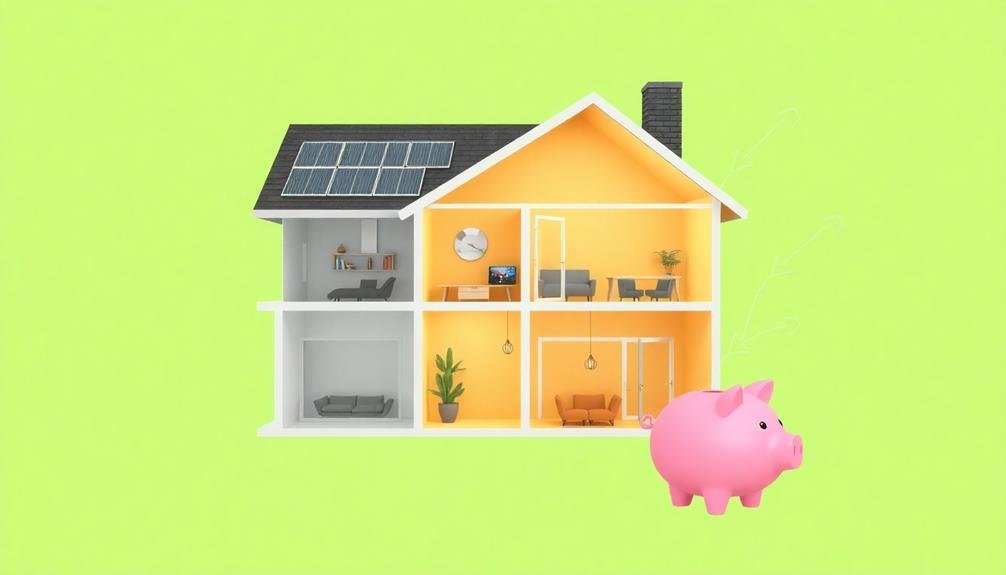
For homeowners looking to boost their property's efficiency and value, home energy upgrades are a smart investment. These improvements can range from simple fixes to major renovations, all aimed at reducing energy consumption and lowering utility bills. Common upgrades include adding insulation, sealing air leaks, installing energy-efficient windows, and upgrading HVAC systems.
Before diving into any upgrades, it's essential to understand your home's current energy performance. Start by conducting a home energy audit, which will identify areas of inefficiency and suggest targeted improvements. You can hire a professional auditor or perform a DIY assessment using online tools and checklists.
When considering upgrades, prioritize those that address your home's biggest energy drains. For example, if your attic lacks proper insulation, adding it could greatly reduce heating and cooling costs. Similarly, replacing old appliances with ENERGY STAR certified models can lead to considerable energy savings over time.
It's also important to research available incentives, such as tax credits, rebates, and financing options, which can help offset the initial costs of energy upgrades.
Identifying Potential Energy-Saving Projects
To identify the most effective energy-saving projects for your home, start with a professional energy audit.
This thorough assessment will pinpoint areas of energy waste and inefficiency, providing you with a roadmap for improvements.
Focus on high-impact upgrade areas such as insulation, HVAC systems, and windows to maximize your energy savings and return on investment.
Energy Audit Essentials
An energy audit is the essential first step in identifying potential energy-saving projects for your home. It provides a thorough assessment of your property's energy consumption and efficiency. During an audit, a professional will examine your home's insulation, HVAC systems, windows, doors, and appliances to pinpoint areas of energy loss and inefficiency.
To make the most of your energy audit, prepare by gathering utility bills from the past year, noting any comfort issues, and creating a list of questions for the auditor. They'll use specialized tools like infrared cameras and blower door tests to detect air leaks and insulation gaps.
Here's a breakdown of what to expect during an energy audit:
| Audit Component | Purpose | Potential Savings |
|---|---|---|
| Blower Door Test | Measure air leakage | 5-30% on heating/cooling |
| Infrared Scanning | Detect insulation gaps | 15-20% on heating/cooling |
| HVAC Inspection | Assess system efficiency | 10-40% on energy bills |
| Appliance Assessment | Identify energy hogs | 10-50% on electricity |
After the audit, you'll receive a detailed report with recommendations for improvements. Prioritize these projects based on their potential ROI and your budget to maximize your home's energy efficiency.
High-Impact Upgrade Areas
Energy-saving powerhouses in your home can greatly impact your utility bills and comfort. Focus your attention on these high-impact upgrade areas to maximize your return on investment:
Insulation: Properly insulating your attic, walls, and floors can markedly reduce heat loss in winter and heat gain in summer. It's one of the most cost-effective upgrades you can make.
HVAC systems: Replacing an old, inefficient heating and cooling system with a modern, high-efficiency unit can dramatically cut energy consumption.
Windows and doors: Upgrading to energy-efficient windows and doors or adding weatherstripping can minimize drafts and improve temperature regulation.
Lighting: Switching to LED bulbs throughout your home is a quick, low-cost way to reduce electricity usage.
Water heating: Installing a tankless or heat pump water heater can lower your water heating costs substantially.
Smart thermostats: These devices learn your habits and automatically adjust temperatures, optimizing energy use.
Appliances: Replacing old appliances with ENERGY STAR certified models can yield considerable energy savings over time.
Sealing air leaks: Identifying and sealing gaps around windows, doors, and other openings can prevent unwanted air infiltration and improve your home's overall efficiency.
Estimating Upgrade Costs
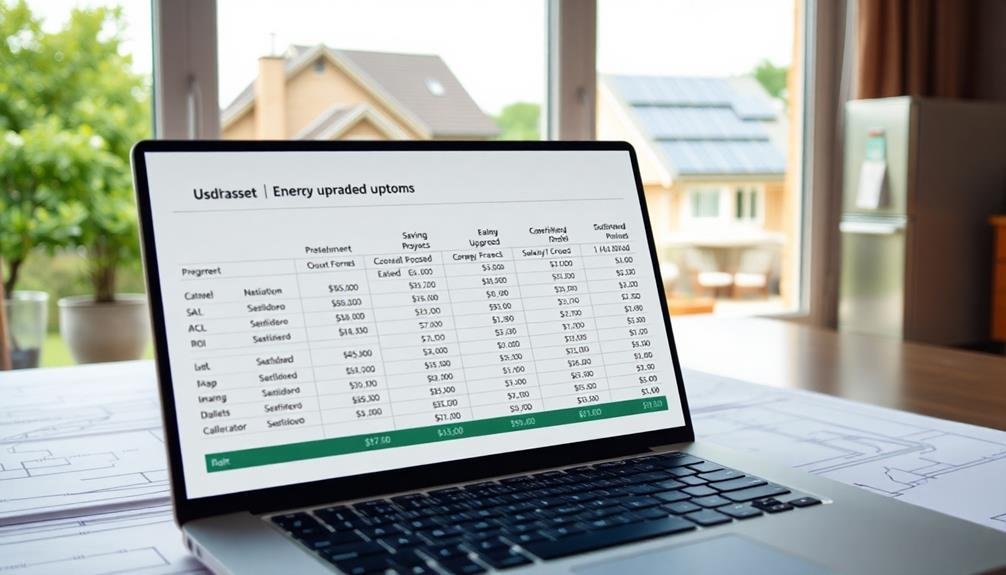
Accurately estimating upgrade costs is essential for planning your home energy improvements. Start by researching average prices for materials and labor in your area. Get multiple quotes from reputable contractors to compare prices and services.
Don't forget to factor in permit fees, which can vary depending on your location and the scope of work. Consider unexpected expenses that might arise during the project, such as repairing hidden damage or upgrading electrical systems.
It's wise to add a 10-20% contingency to your budget for these potential issues. Remember that energy-efficient upgrades often qualify for rebates, tax credits, or incentives, which can offset your initial costs.
When estimating, break down costs into categories: materials, labor, permits, and additional expenses. This detailed approach will help you identify areas where you might save money or need to allocate more funds.
Don't overlook the long-term savings from reduced energy bills when calculating your overall investment. By thoroughly researching and planning your upgrade costs, you'll be better prepared to make informed decisions about which improvements offer the best return on investment for your home.
Calculating Energy Savings
Once you've estimated your upgrade costs, it's time to determine how much you'll save on energy bills. To calculate your energy savings, you'll need to compare your current energy usage with projected post-upgrade consumption. Start by gathering your past 12 months of utility bills to establish a baseline. Then, research the expected energy reductions for each upgrade you're considering.
Many utilities offer online calculators or energy audit services to help estimate potential savings. You can also use the Department of Energy's Home Energy Saver tool for a thorough analysis. Consider factors like local climate, home size, and occupancy patterns when projecting savings.
Here's a quick reference for estimated annual savings from common upgrades:
| Upgrade | Estimated Annual Savings |
|---|---|
| Attic Insulation | $100 – $600 |
| LED Lighting | $75 – $300 |
| ENERGY STAR Appliances | $50 – $200 |
| Programmable Thermostat | $180 |
| Weatherstripping | $50 – $100 |
Determining Payback Period
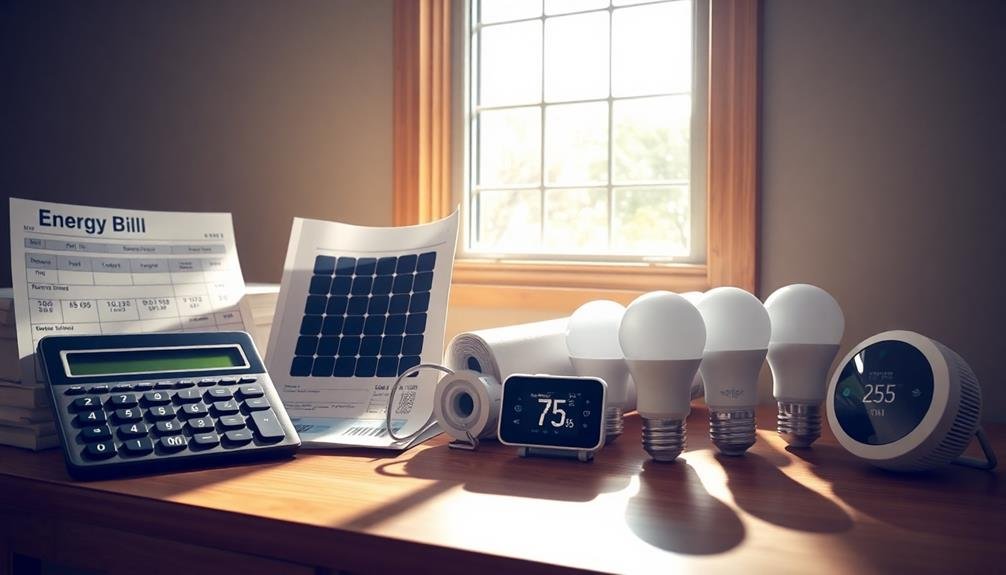
To determine the payback period for your home energy upgrades, you'll need to start by estimating the initial costs of the improvements.
Next, project your annual energy savings based on the calculations from the previous step.
Estimating Initial Upgrade Costs
When estimating the initial costs of home energy upgrades, you'll need to evaluate several factors to determine the payback period accurately.
Start by researching the average prices for materials and labor in your area. Don't forget to factor in any potential rebates or tax incentives that may offset your expenses.
Consider getting multiple quotes from reputable contractors to guarantee you're getting a fair price. It's also wise to budget for unexpected costs that may arise during the installation process.
Remember that higher-quality materials or more advanced technologies may have a higher upfront cost but could lead to greater long-term savings.
To get a thorough estimate, include these key elements:
- Materials cost (e.g., insulation, windows, HVAC systems)
- Labor expenses for installation
- Permits and inspection fees
- Removal and disposal of old equipment or materials
Projecting Annual Energy Savings
Calculating your projected annual energy savings is essential for determining the payback period of your home energy upgrades. To estimate these savings, you'll need to compare your current energy bills with expected post-upgrade consumption.
Start by gathering your past 12 months of utility bills to establish a baseline.
Next, research the average energy savings for each upgrade you're considering. Many manufacturers provide estimates, but it's wise to consult independent sources or energy auditors for more accurate figures. Factor in your local climate and energy rates, as these can greatly impact savings.
Use online calculators or spreadsheets to input your current energy usage and the expected reduction from each upgrade. Don't forget to account for potential increases in energy costs over time. This will give you a more realistic long-term projection.
Remember that some upgrades, like smart thermostats or LED lighting, may show immediate savings, while others, such as insulation or HVAC systems, might take longer to realize their full benefit.
Calculating Break-Even Point
In light of your projected annual energy savings, determining the break-even point for your home energy upgrades is essential. This calculation helps you understand how long it'll take for your energy savings to offset the initial investment.
To calculate the break-even point, divide the total cost of your upgrades by the annual energy savings. The result is your payback period in years.
For example, if you've spent $10,000 on upgrades and expect to save $1,000 annually, your break-even point would be 10 years.
Keep in mind that this simple calculation doesn't account for factors like energy price fluctuations or the time value of money.
To get a more accurate picture of your return on investment, consider these additional factors:
- Potential increases in energy costs over time
- Tax incentives or rebates that reduce your initial investment
- Improved home comfort and livability
- Increased property value due to energy-efficient upgrades
Evaluating Long-Term Financial Benefits
Many homeowners overlook the long-term financial benefits of energy upgrades, focusing solely on upfront costs. However, it's essential to evaluate the ongoing savings and value appreciation these improvements can bring to your home.
When assessing long-term benefits, factor in rising energy costs. As utility rates increase over time, your energy-efficient home will save you more each year. You'll also enjoy increased comfort and potentially higher resale value. Energy-efficient homes often command premium prices in the real estate market.
Don't forget about potential tax incentives and rebates. Many governments offer financial perks for eco-friendly upgrades, which can greatly offset initial expenses. Research local and federal programs to maximize your savings.
Examine the lifespan of your upgrades. High-quality insulation, energy-efficient windows, and modern HVAC systems can last for decades, providing consistent savings throughout their use. Additionally, these improvements often require less maintenance, reducing your long-term costs further.
Lastly, factor in the environmental impact. By reducing your carbon footprint, you're contributing to a sustainable future, which has intangible but valuable long-term benefits for you and future generations.
Frequently Asked Questions
Are There Tax Incentives or Rebates Available for Home Energy Upgrades?
Yes, there are often tax incentives and rebates available for home energy upgrades. You'll find federal, state, and local programs that offer financial benefits for improvements like solar panels, energy-efficient appliances, and insulation. Check with your local utility company too.
How Do Energy Upgrades Affect a Home's Resale Value?
Energy upgrades can boost your home's resale value considerably. You'll likely see increased buyer interest and higher offers. Energy-efficient features are attractive to potential buyers, as they'll save money on utility bills long-term. It's a smart investment.
Can I Finance My Energy Upgrades Through My Mortgage?
Yes, you can finance energy upgrades through your mortgage. You'll find options like Energy Efficient Mortgages (EEMs) or HomeStyle Energy loans. These allow you to roll upgrade costs into your home loan, making improvements more affordable.
Which Upgrades Offer the Best Return on Investment in Different Climates?
You'll find different upgrades offer the best ROI depending on your climate. In cold regions, insulation and efficient heating systems excel. For hot areas, focus on cooling upgrades and solar panels. Weatherization typically pays off in all climates.
How Do DIY Energy Upgrades Compare to Professional Installations in Terms of ROI?
You'll often save money with DIY upgrades, but professional installations typically offer better long-term ROI. They're more efficient and durable, reducing future costs. However, simple DIYs like weatherstripping can still provide excellent returns with minimal investment.
In Summary
Calculating your home energy upgrades' ROI is essential for making informed decisions. You've learned to identify potential projects, estimate costs, and calculate energy savings. By determining the payback period, you can prioritize upgrades that offer the best value. Remember, long-term financial benefits often extend beyond immediate savings. With this knowledge, you're well-equipped to make smart investments in your home's energy efficiency, reducing bills and increasing comfort for years to come.
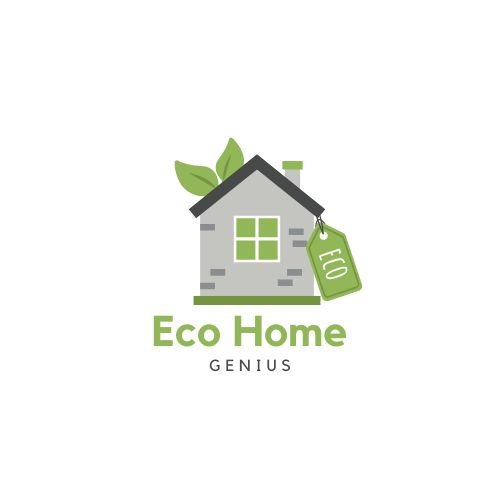
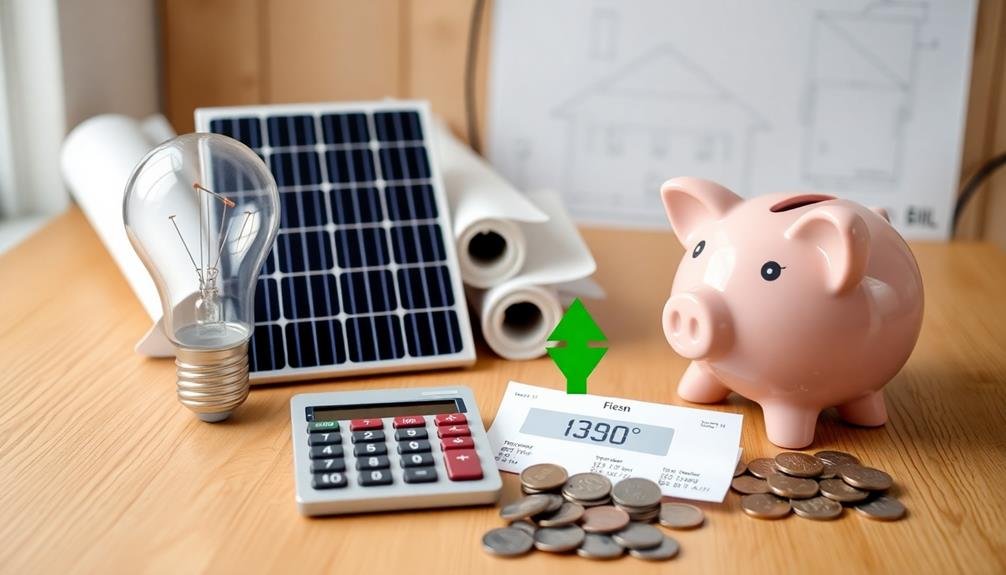
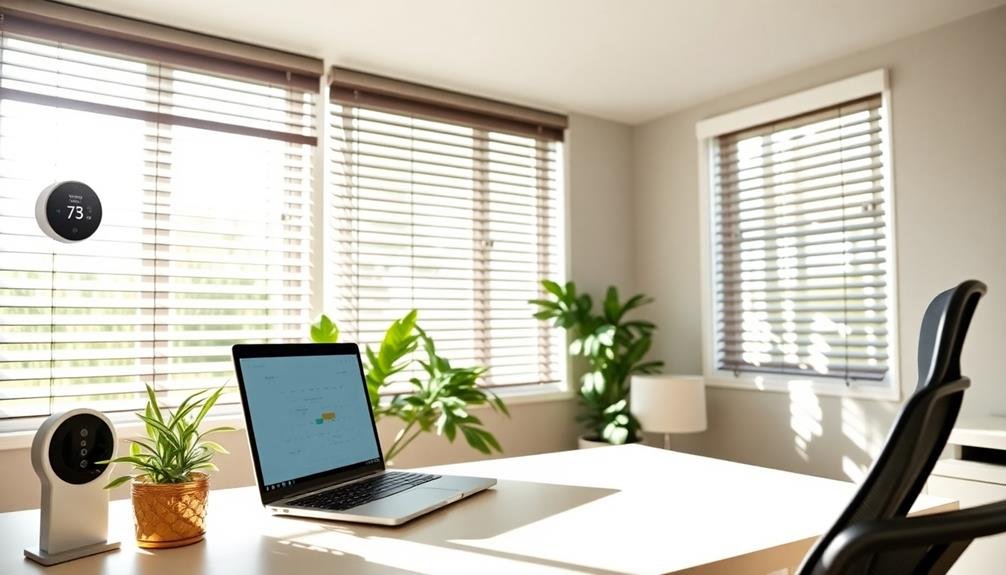
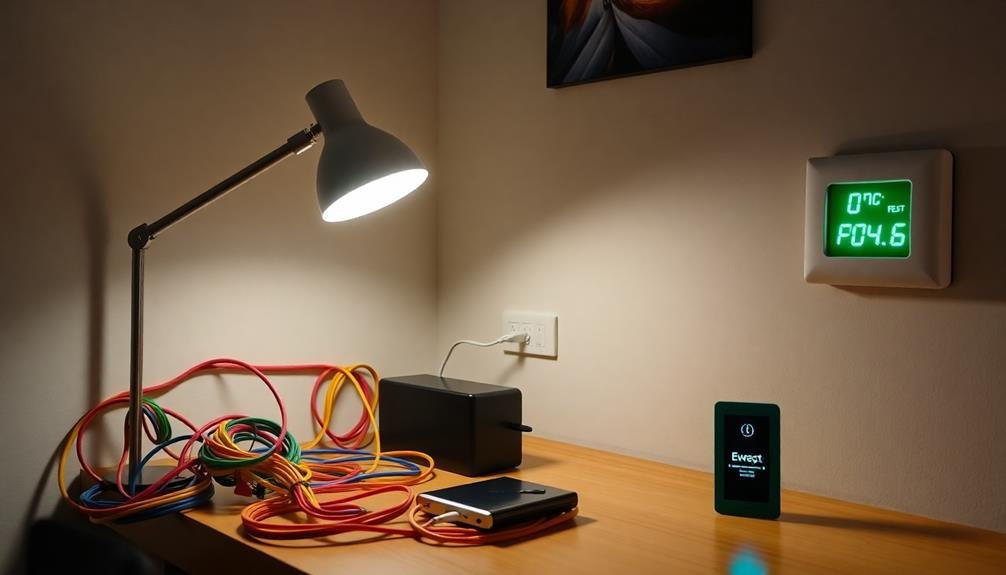
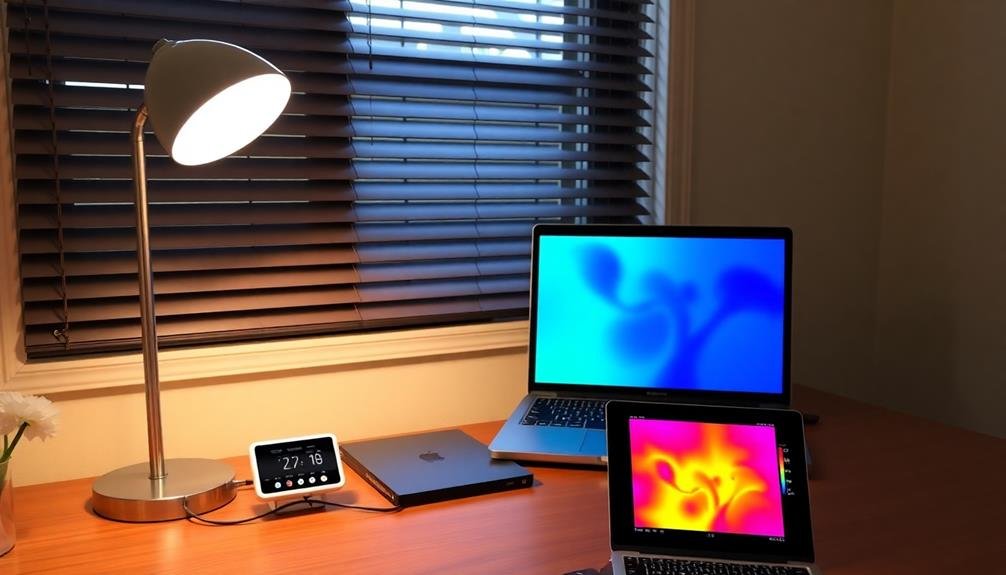
Leave a Reply